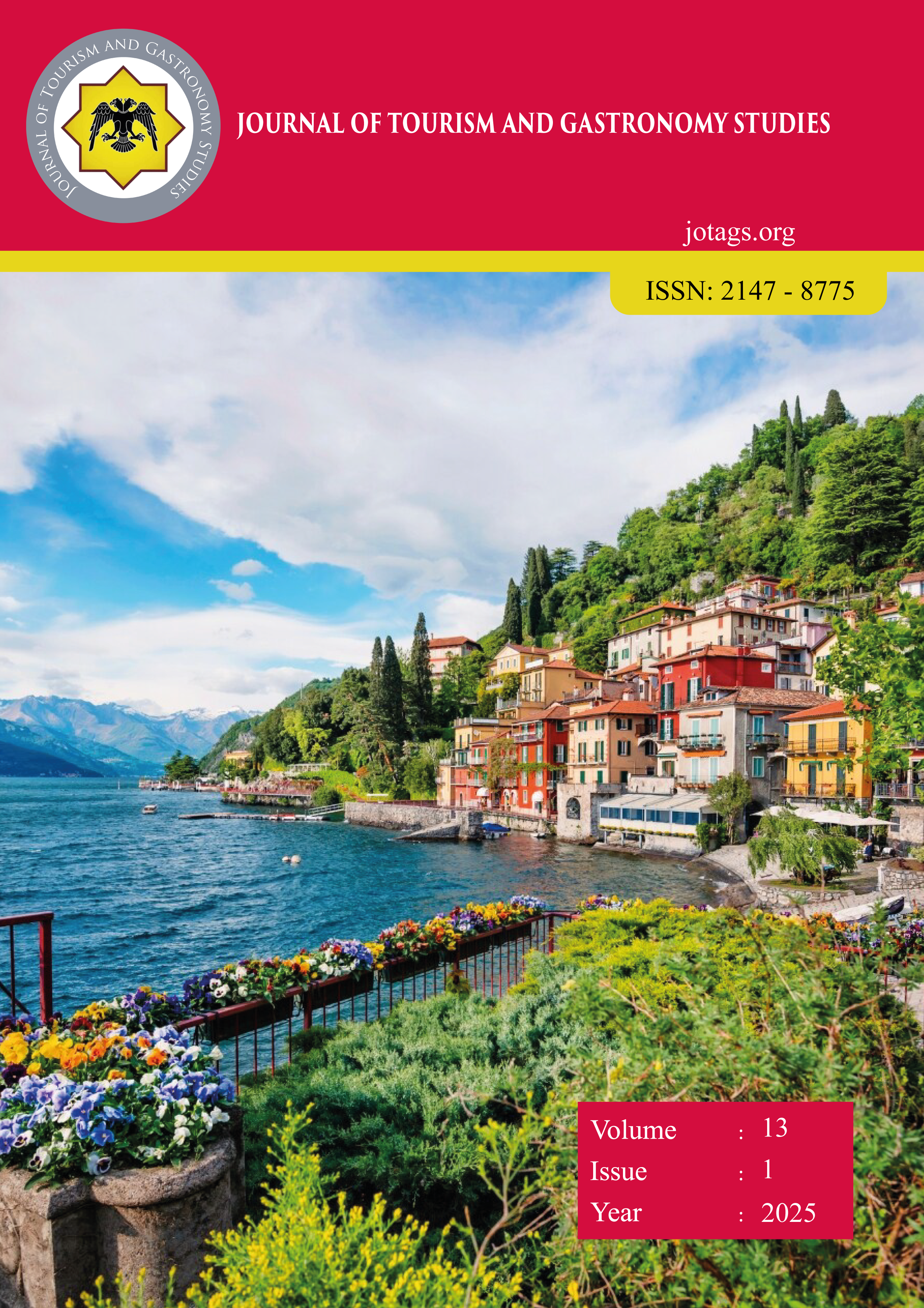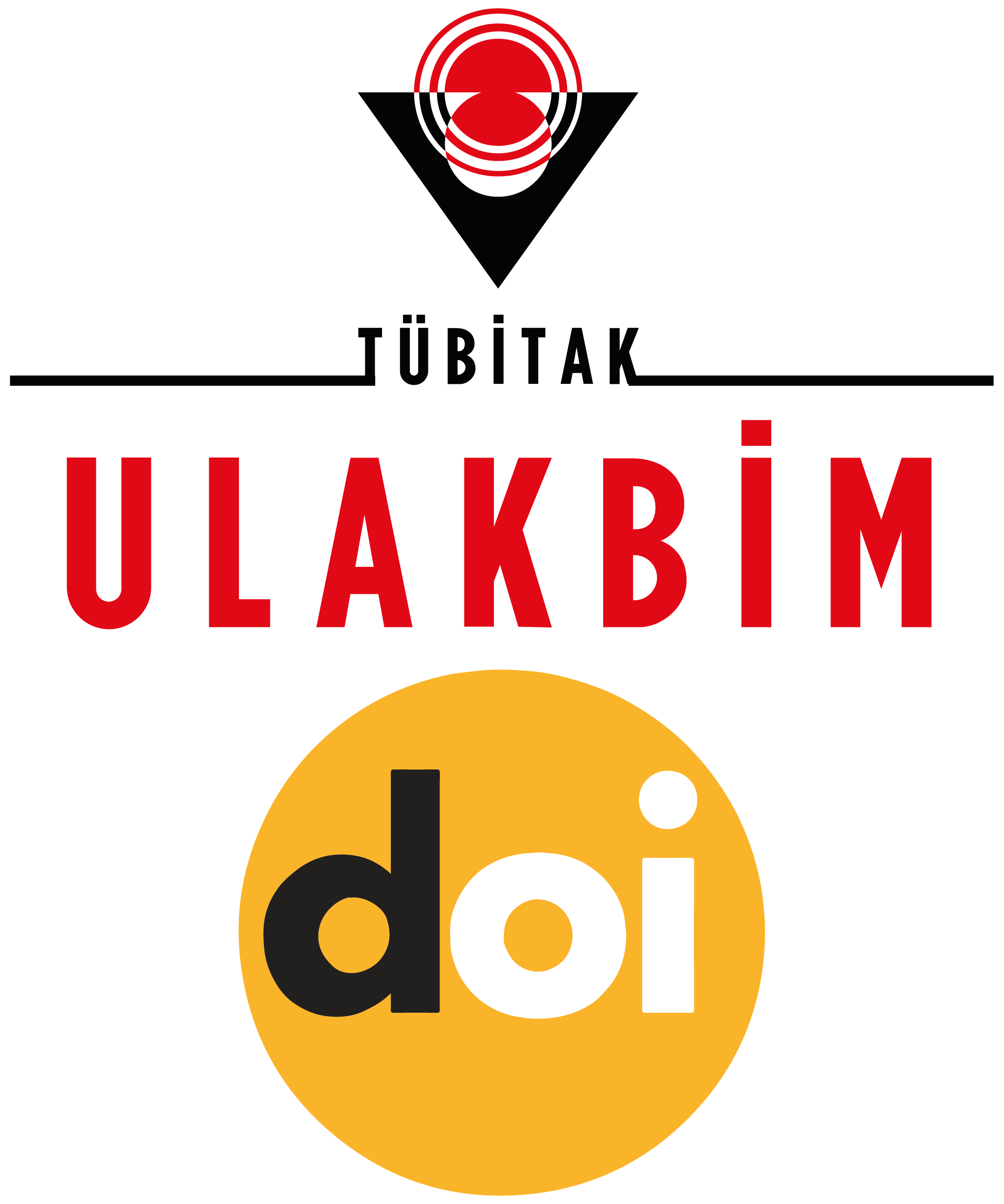Turizmde Örgütsel Biyomimikri: Doğadan İlham Alan Sürdürülebilir Yenilikçi Yaklaşımlar (Organizational Biomimicry in Tourism: Sustainable Innovative Approaches Inspired by Nature)
DOI:
https://doi.org/10.21325/jotags.2025.1573Keywords:
Biomimicry, SustainabilityAbstract
Today, the tourism sector is not only focused on economic growth, but also adopts a sustainable approach that includes environmental and social responsibilities. In this context, the concept of biomimicry, inspired by nature, offers innovative and sustainable solutions for tourism businesses. Organizational biomimicry, on the other hand, focuses on tourism businesses optimizing their organizational structures and business processes inspired by examples in nature. This approach enables businesses to achieve their sustainability goals and provide more impressive experiences for tourists. In this context, this study aims to provide a theoretical framework to examine the applicability of biomimicry in the tourism sector and to reveal the potential of biomimicry applications in the tourism sector by combining theoretical concepts with practical applications.
References
Alessio, G., Zoë, R., & Vincent, B. (2023). What Does it Mean to Mimic Nature? A Typology for Biomimetic Design. Philosophy and Technology, 36(4).
Amer, N. (2019). Biomimetic Approach in Architectural Education: Case study of 'Biomimicry in Architecture' Course. Ain Shams Engineering Journal, 10(3), 499-506. doi:10.1016/j.asej.2018.11.005
Baumeister, D., Tocke, R., Dwyer, J., Ritter, S., & Benyus, J. M. (2012). Biomimicry Resources Handbook, Life’s Principle and Biomimicry Design Spiral.
Benyus, J. M. (1997). Biomimicry: Innovation Inspired by Nature. Harper Perennial.
Biomimicry Institute. (2018). A Sustainable World Already Exists. Retrieved from:https://biomimicry.org/what-is-biomimicry/
Borgogno, F., Mondini, S., & Todaro, F. (2021). "Organizational Biomimicry in the Tourism Industry: Insights and Applications." Journal of Sustainable Tourism, 29(5), 859-878.
Couzin, I. D. (2009). Collective cognition in animal groups. Trends in Cognitive Sciences, 13(1), 36-43.
Drake, C. (2011). Biomimicry: emulating the closed-loops systems of the Oak tree for sustainable architecture. Published Bachelor's thesis.
Elkington, J. (1998). Accounting for the triple bottom line. Measuring Business Excellence, 2(3), 18-22.
European Commission a European Agenda for the Collaborative Economy. 2016. Available online: https://ec.europa.eu/transparency/regdoc/rep/1/2016/EN/COM-2016-356-F1-EN-MAIN-PART-1.PDF
French, J. R., & Ahmed, B. M. (2011). Biomimicry of termite social cohesion and design to inspire and create sustainable systems. In On biomimetics. IntechOpen.
Ganti, T., & Aditya, S. (2018). Biomimicry in Organizational Design: A Systematic Review. International Journal of Organizational Analysis, 26(5), 991-1010.
Garriga, E., & Melé, D. (2004). Corporate social responsibility theories: Mapping the territory. Journal of Business Ethics, 53(1), 51-71.
Gerola, A., Robaey, Z., & Blok, V. (2023). What does it mean to mimic nature? A typology for biomimetic design. Philosophy & Technology, 36(4), 65.
Glausiusz, J. (2012). Mimicking Nature's Wisdom: Biomimicry for a Sustainable Planet. National Geographic.
Gordon, D. M. (2010). Ant Encounters: İnteraction Networks and Colony Behavior. In Ant Encounters. Princeton University Press.
Gossling, S., Hall, C. M., & Weaver, D. B. (2008). Sustainable Tourism Futures: Perspectives on Systems, Restructuring, and Innovations. London: Routledge.
Guadarrama, N., & Castro, M. (2019). Sustainable Tourism Development: A Biomimicry Model. Journal of Sustainable Tourism, 27(7), 1033-1050.
Hamel, G. (2020). Humanocracy: Creating Organizations as Amazing as the People Inside Them. Harvard Business
https://ec.europa.eu/info/strategy/priorities-2019-2024/european-green-deal_en
Ivanić, K. Z., Tadić, Z., & Omazić, M. A. (2015). Biomimicry–an overview. The Holistic Approach to Environment, 5(1), 19-36.
Jain, V., & Mitra, A. (2024). Case Studies and Practical Implementation of Biomimicry in Bio-Inspired Optimization. In Bio-Inspired Intelligence for Smart Decision-Making (pp. 85-100). IGI Global.
Klemas, V. V. (2013). Remote sensing and navigation in the animal world: an overview. Sensor Review, 33(1), 3-13.
Landgraf, T., Oertel, M., Kirbach, A., Menzel, R., & Rojas, R. (2012). Imitation of the honeybee dance communication system by means of a biomimetic robot. In Biomimetic and Biohybrid Systems: First International Conference, Living Machines 2012, Barcelona, Spain, July 9-12, 2012. Proceedings 1 (pp. 132-143). Springer Berlin Heidelberg.
Lee, D. (2011). Biomimicry: inventions inspired by nature. Kids Can Press Ltd.
Lepora, N. F., Verschure, P., & Prescott, T. J. (2013). The state of the art in biomimetics. Bioinspiration & Biomimetics, 8(1), 013001.
Lipholt, N. R. W. (2019). Biomimicry-Where nature is changing innovation (Bachelor's thesis, University of Twente).
Lovins, A. B., Lovins, L. H., & Hawken, P. (2018). Natural Capitalism: Creating the Next Industrial Revolution. Back Bay Books.
Nash, C., Ciupala, A., Gedge, D., Lindsay, R., & Connop, S. (2019). An ecomimicry design approach for extensive green roofs. Journal of Living Architecture, 6(1), 62-81.
Othmani, N. I., Yunos, M. Y. M., Ramlee, N., Hamid, N. H. A., Mohamed, S. A., & Yeo, L. B. (2022). Biomimicry levels as design inspiration in design. Int. J. Acad. Res. Bus. Soc. Sci, 12, 1094-1107.
Papanek, V. (2019). Design for the Real World: Human Ecology and Social Change. Thames & Hudson.
Ratnieks, F. L. (2007, April). Biomimicry: Further İnsights From ant Colonies?. In Workshop on Bio-Inspired Design of Networks (pp. 58-66). Berlin, Heidelberg: Springer Berlin Heidelberg.
Robertson, B. (2015). Holacracy: The New Management System for a Rapidly Changing World. Henry Holt and Company.
Ryan, C. (2002). Equity in Tourism: Frameworks for Collaborative Planning. Channel View Publications.
Sewalk, S., Elzarka, H., Hellwig, C., & Singh, A. (2015). Biomimicry Design and Construction Practices for Luxury Tourism Facilities. International Journal of Architecture, Engineering and Construction, 4(1).
Sheldrake, P. (2020). The Entangled Life: How Fungi Make Our Worlds, Change Our Minds, and Shape Our Futures. Random House.
Vincent, J. F. V., Bogatyreva, O. A., Bogatyrev, N. R., Bowyer, A., & Pahl, A. K. (2006). "Biomimetics: Its Practice and Theory". Journal of the Royal Society Interface, 3(9), 471-482.
Wearing, S., & Neil, J. (2009). Ecotourism: Impacts, Potentials and Possibilities. Butterworth-Heinemann.
Downloads
Published
How to Cite
Issue
Section
License
Copyright (c) 2025 Journal of Tourism & Gastronomy Studies

This work is licensed under a Creative Commons Attribution-NonCommercial 4.0 International License.








